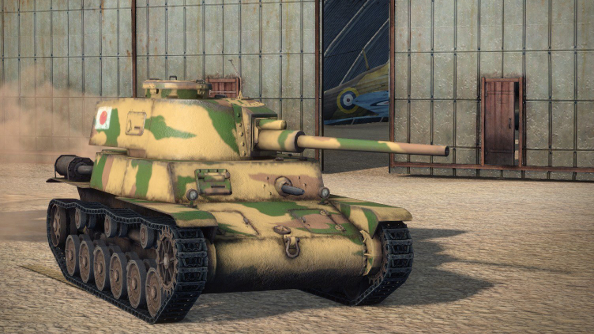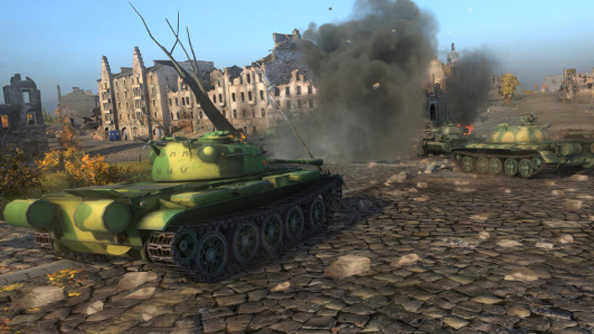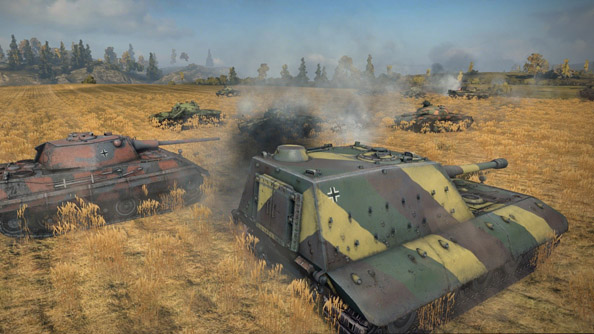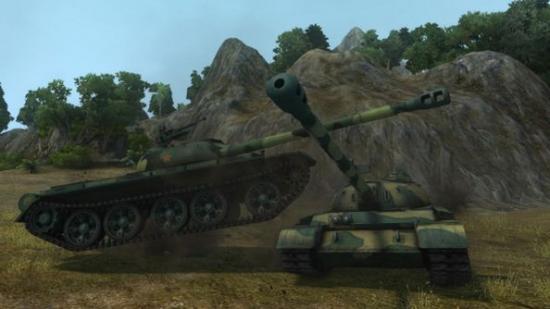Lining the walls of the hall for this year’s World of Tanks grand finals were banners for all the teams taking part. In pride of place were the banners for Na’Vi, Hellraisers, Kazna Kru; Russian teams all of them. EL Gaming’s banner was hidden behind one of the big projection screens.
No one expected much of the Chinese team. Not even Wargaming.
Yet, EL Gaming stormed through the championship, taking second place. They did it in a way that’s ensured no World of Tanks tournament will be played the same again.
For the past two years Wargaming’s been running a series of qualifying tournaments that culminate in a grand finals held in Warsaw. I went to last year’s finals and left unconvinced by World of Tanks as a sport: it had a major camping problem.
The problem was the format. Two teams fight over a map, one trying to capture two points on the map the other trying to defend them. The attackers could win by taking the points or destroying every tank on the defending team. The defenders could win by killing all the attackers.
The major flaw was matches could end in a draw.
The first eight minutes of each match’s ten minute timer would see both teams cautiously hiding behind cover. In the final two minutes the attackers would make a push on the defenders and, if it looked like it was going to go badly, they’d run away to ensure a draw instead of a loss.
It was boring for spectators.

“We could see viewership numbers dropping, participation numbers dropping; eSports didn’t grow at all,” Wargaming’s director of eSports, Mohamed Fadl told me. They called a general meeting with the major pro teams looking for solutions. Wargaming pitched 12 different game modes to the teams, asking for feedback.
Urged on by Na’Vi, last year’s champions, Wargaming settled on a format that was shorter, encouraged aggressive attackers, and, most importantly, couldn’t end in a draw.
Wargaming tweaked the levels to take advantage of the new format, Fadl explains. “We had to move the bases, I swear to god, like 500 times because one base can’t be seen by the other, otherwise you can camp. So the developers had to move the base, change the terrain, build something in the middle. Now the defender has to choose where to go without knowing where the attackers are coming from. Often they split up while the enemy team is attacking with full force on one side. It becomes a mind game.”
The change across was evident in all of last weekend’s games: attacking teams dove straight into the action and the rounds were over in two minutes instead of ten.

Wargaming planned for the new format to kick the attackers into action. They didn’t plan for EL Gaming.
From quite a shaky beginning, losing 5 – 0 to Na’vi on the first day, EL Gaming managed to fight their way to the semi finals, gaining a reputation for aggressive play. It looked as though the semis would be the end of them, however. Kazna Kru wiped the floor with EL in the first two rounds, completely absorbing EL’s aggressive advance into their defensive line.
It was on the switch where everything changed.
When it came to EL’s turn in defence they completely ignored the traditional tactics of World of Tanks. They charged forwards en masse to take on Kazna Kru near the attackers’ spawn. Kazna were stunned by the attack and EL destroyed them in all of 90 seconds.
The next round Kazna knew what to expect but it happened again. EL turned the established cautious style of World of Tanks against their opponents. “They target the most dangerous target they see right now,” Fadl says explaining how they kept winning the team fights. “It should take seconds to react and do this but they do it right away.”
Normally both teams would be arranged across the battlefield punishing any player that edged out into the open of the battlefield. But these games were a mess of tanks blasting away at each other in a tight bundle, each team trying to outflank the other in close quarters.
EL had turned a game about ranged artillery into a knife fight.
When it was Kazna’s turn to defend again EL didn’t change their tactics. Kazna were still reeling from the turnaround. EL kept rushing Kazna, catching the more experienced team off guard time and time again.
Camping fit the old format. But the new rules reward the daring. EL understood that.

“EL has changed the history of World of Tanks,” Fadl says. “Having a Chinese team place second in World of Tanks, I can promise you the hardcore of World of Tanks eSports are stunned.
“After this grand final, all the teams will change their strategies. All of them will change their map behaviour because this is the first time they’ve met the best teams out of the other regions. The Europeans and Russians know each other, they’ve played against each other, but Elong’s come in and win. They have to think ‘What happened here? What are they doing to us?’”
However, Fadl realises that the new format could force some teams out of the game. “I can promise you some teams here will now stop. The game was ok for them but now the dynamics are changing and teams are stepping up. They’re still amazing players but some of them will drop off, others will change their behaviour.”
In a year, World of Tanks has completely changed and, with the EL’s unconventional success, next year it will be a very different game again.
